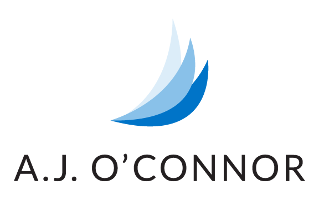
Unlocking Success: Overcoming the Barriers to Coaching for Performance
In the realm of effective leadership, one competency has proven to be an indispensable asset: coaching for performance. This proactive approach to guiding, developing, and inspiring team members not only drives individual growth but also enhances overall organizational success. The data underscores the significance coaching for performance can have on business and workplace efficiency. Consider the following statistics:
- According to a study by the International Personnel Management Association, coaching can improve productivity by up to 88%.
- The International Coaching Federation found that 70% of individuals who receive coaching saw improvements in their work performance, communication skills, and relationships.
- A survey by HR Magazine revealed that organizations with strong coaching cultures report employee engagement levels of over 60%, compared to 48% in organizations without such cultures.
In our coaching practice, we’ve seen an uptick in organizations wanting to develop the skills of their leaders in this area. However, even while the benefits of coaching for performance are substantial and organizations are recognizing this, some leaders remain hesitant to lean into this approach. As we embrace why coaching for performance is a crucial leadership competency, it’s also important to explore the reasons behind leader reluctance, learn from the qualities of strong leaders who embrace coaching and adopt practical tips for initiating coaching for performance within your leadership role.
The Power of Coaching for Performance
Coaching for performance is a leadership practice that involves personalized guidance and support aimed at improving an individual’s skills, capabilities, and results. By investing time and effort into coaching, leaders foster a culture of continuous learning, empowerment, and growth. A study by the International Coaching Federation revealed that organizations with strong coaching cultures report higher employee engagement, increased productivity, and a positive impact on overall business performance.
The Avoidance Dilemma: Why Some Leaders Shy Away
Despite the compelling evidence in favor of coaching for performance, there are various reasons why some leaders avoid incorporating it into their leadership style:
- Skill Gap: Some leaders may lack the necessary coaching skills and fear that they might not be able to provide meaningful guidance.
- Time Constraints: Leaders may perceive coaching as a time-consuming process that detracts from their other responsibilities. In my experience, leaders will site time constrains which at times, is a mask for a lack of confidence in their skills.
- Short-Term Focus: Leaders often prioritize immediate tasks and outcomes over long-term development, leading them to neglect coaching for performance. Some leaders recognize this as a ‘nice to do’ and then are surprised when a valued team member makes the decision to leave.
- Ego Barrier: Insecure leaders may worry that coaching subordinates could make them appear less knowledgeable, authoritative, or put their skill gap center stage.
- Resistance to Change: The transition from a traditional command-and-control style to a coaching-oriented approach requires a shift in mindset, which can be met with resistance. Some leaders may not have had the benefit of working for a leader that demonstrates strong coaching skills.
The Traits of Effective Leaders: Coaching Advocates
Strong leaders who embrace coaching for performance exhibit a distinct set of qualities that distinguish them in today’s competitive business landscape:
- Empathy and Active Listening: Effective coaches listen attentively to their team members’ concerns, perspectives, and aspirations, fostering a sense of trust and understanding. When I think back to impressive leaders I worked with, they were able to build a platform of psychological safety that formal and informal coaching fosters.
- Adaptability: These leaders are flexible in their approaches, tailoring coaching strategies to suit individual needs and learning styles. We see many of our clients using assessments to understand the styles of their team members so that they can work effectively together.
- Long-Term Vision: Successful coaches prioritize long-term employee development over short-term gains, recognizing that investing in people pays off over time. In the past, I’ve worked with leaders who are concerned with ‘holding on’ to their best people, rather than embrace an enterprise view of talent. Over time, employees who work for these leaders tend to move to other opportunities, which may include roles outside of the organization.
- Feedback Mastery: They are skilled in delivering constructive feedback, helping individuals recognize areas for improvement while highlighting their strengths.
- Self-Awareness: Strong leaders possess a heightened awareness of their own strengths and weaknesses, which enables them to empathize and connect with their team members. 360-degree feedback tools, as an example, are useful in helping leaders acquire self-awareness.
Getting Started: Practical Tips for Coaching for Performance
For leaders eager to harness the benefits of coaching for performance, here are some actionable steps we recommend to our clients to initiate the process:
- Set Clear Goals: Define specific performance goals and expectations for each team member to align coaching efforts with desired outcomes, and ensure that they are understood by both parties. As a leader, providing context around goals and expectations from an organizational perspective is important for gaining buy-in and understanding.
- Foster Open Communication: Create an environment where open dialogue and feedback exchange are encouraged, enabling team members to share their challenges and aspirations.
- Provide Constructive Feedback: Offer regular, constructive feedback that highlights accomplishments and identifies areas for improvement. Focus on specific behaviors and outcomes and provide actionable suggestions for growth.
- Customize Coaching Plans: Tailor coaching approaches to individual needs, recognizing that each team member possesses unique strengths, weaknesses, and learning styles.
- Empower Ownership: Encourage team members to take ownership of their development by setting their goals, identifying areas for improvement, and seeking out learning opportunities.
- Allocate Time: Dedicate time to coaching activities in your schedule, demonstrating your commitment to the growth and development of your team.
Realizing the Impact of Coaching for Performance
I once worked for a leader who thought of coaching for performance as a ‘tick the box’ exercise. I can’t say that I looked forward to our touch base meetings. Requests for guidance were often met with vague answers, and he was rarely prepared for our meetings. In confiding in a colleague, that individual reframed it for me as ‘know you know what not to do,’ and that wisdom has always stuck with me. My next leader was outstanding, and it made all the difference for me. I learned to incorporate the ‘what to do’ and ‘what not to do’ and check in with direct reports and colleagues to ensure that my actions aligned with the type of coach and leader I wanted to be.
As you think through your coaching skills, remember coaching for performance is more than a mere leadership trend—it is an essential competency that drives employee development, engagement, and organizational success. By overcoming the barriers that hold leaders back and adopting the traits of effective coaching advocates, leaders can create a culture of growth and empowerment that propels their teams to new heights. As a result, leaders can embark on a transformative journey that benefits their own career, the teams they lead, and the entire organization.
Related Posts:
The Power of Transparent Communication: A Vital Leadership Competency

